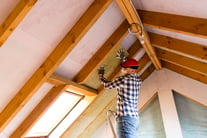 The International Energy Agency (IEA) today issued its Special Report on Sustainable Recovery, which details a three-year path forward for a green energy-based global recovery post-COVID-19. The report calls for a broad scale of global actions to help reduce greenhouse gas emissions, recover jobs lost during the pandemic, and boost economic activity.
The International Energy Agency (IEA) today issued its Special Report on Sustainable Recovery, which details a three-year path forward for a green energy-based global recovery post-COVID-19. The report calls for a broad scale of global actions to help reduce greenhouse gas emissions, recover jobs lost during the pandemic, and boost economic activity.
Published in cooperation with the International Monetary Fund, the report details a set of policy actions and strategic investments over 2021-2023 that can achieve significant outcomes, including:
- Boosting global economic growth by an average of 1.1 percentage points a year
- Saving or creating 9 million jobs a year
- Reducing annual global energy-related greenhouse gas emissions by a total of 4.5 billion tons by the end of the plan
The plan would also benefit human health and well-being, resulting in a 5 percent reduction in air pollution emissions. The proposal would cost roughly $1 trillion annually over the next three years and require both public and private investment.
Building Retrofits Key
A key target for the green recovery is buildings, which account for more than 30 percent of global energy use today and 30 percent of energy-related CO2 emissions. According to the IEA, investment must accelerate significantly if the world is to meet its sustainable development goals.
Average annual energy retrofit rates in buildings are currently less than 1 percent in most major markets, which is well below the level required to achieve sustainability objectives. Most buildings were constructed before there were effective building codes. Consequently, in the U.S. today, 90 percent of U.S. homes are under-insulated. Further, globally, less than one-third of countries globally have mandatory energy-related codes for new construction.
U.S. Policy Asks Align with International Aims
While it remains to be seen if any of IEA’s ambitious suggestions will drive global policymaking, U.S. businesses have recently articulated policy positions that support the type of retrofit activity advocated by the organization.
For example, this month, nearly 800 U.S. contractors and manufacturers organizations including NAIMA, called on Congress to extend and expand the 25C tax incentive for energy-efficient upgrades in homes. Expanding existing tax incentives for energy efficiency improvements in homes and buildings is one of the best ways to put this sector back to work as the economy reopens in the wake of COVID-19. In addition, these incentives can quickly stimulate economic activity in the sector, giving consumers a strong incentive to invest while providing businesses the demand they need to maintain their workforce and rehire employees – further driving economic activity.
Globally, the energy efficiency sector offers massive potential to boost economic activity, reduce greenhouse emissions, and create green jobs.
Click here to download the report.





